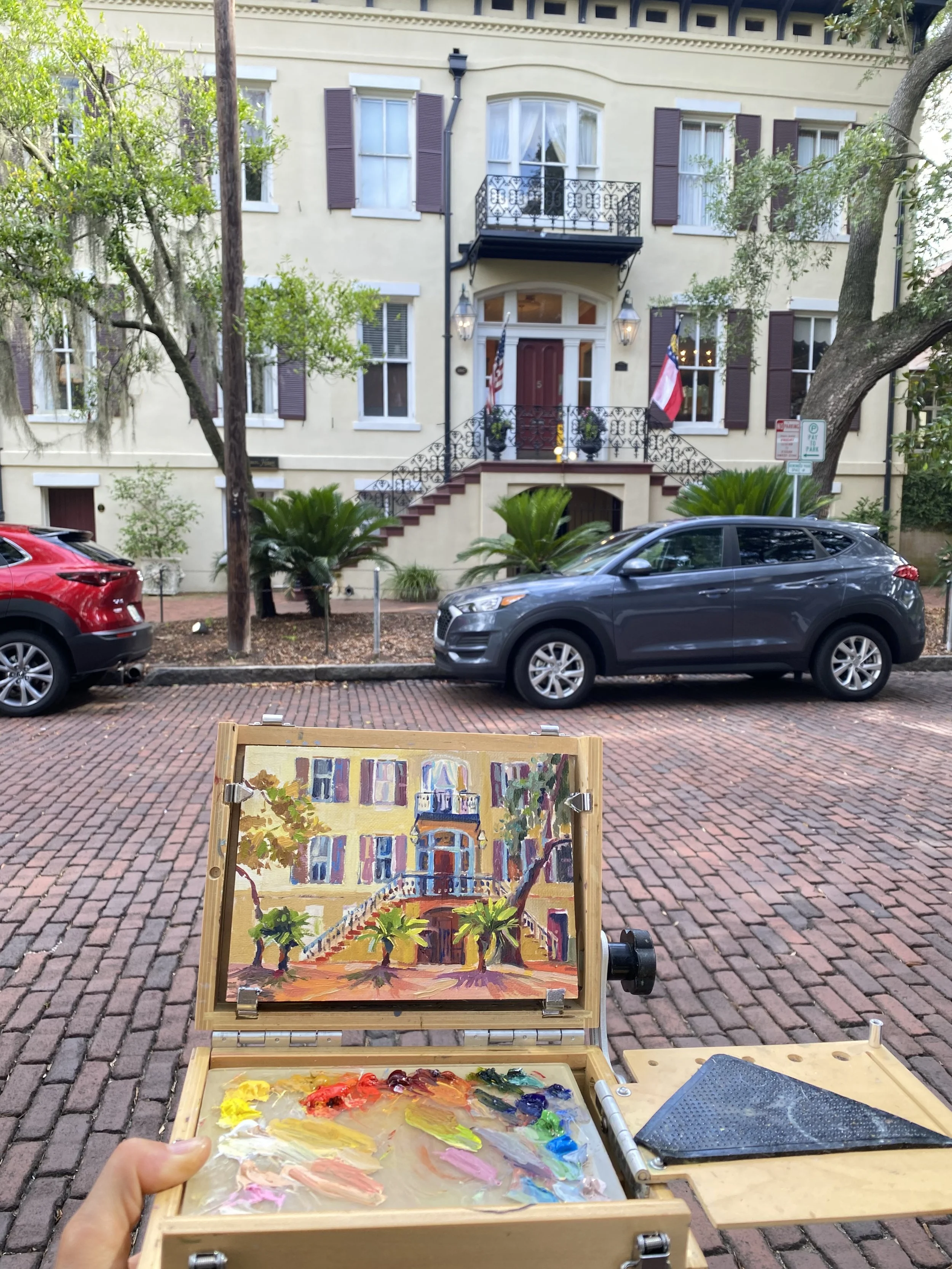#137: The Eliza Thompson House: Another Lovely Place on Jones Street
General Hardee was well-known to officers of both armies because his manual on infantry tactics became required reading for a generation of officers during the Civil War. To quote Hardee's biographer Nathaniel Cheairs Hughes, Jr., "It might be said that every officer of the war went into battle with a sword in one hand and a copy of Hardee's manual in the other."
—Clement Mulloy, Arkansas State University
The Eliza Thompson House: Another Lovely Place on Jones Street
In mid-December 1864, Confederate army baggage trains passed through the city streets of Savannah and crossed the Savannah River into South Carolina over a makeshift rickety pontoon bridge.
It fell to General William Joseph Hardee to defend Savannah. But that order came with the proviso if he determined the city would fall, he was to save his 10,000-man army by escaping into the Carolinas.
Just three months earlier, Hardee assumed command of the Department of South Carolina, Georgia, and Florida for the Confederate army. His assignment was to oppose William Tecumseh Sherman's March to the Sea. His military forces were hopelessly outnumbered and soon obliged to evacuate Savannah, allowing for the easy Christmas occupation by Sherman's army.
Only days earlier just outside the city, General Sherman came close to death by cannon fire at Pooler Station, which marked the last stop on the Central of Georgia Railway before it reached Savannah.
While in Savannah, Sherman accepted hospitality from cotton-tycoon Charles Greene to locate his army headquarters at the Greene-Meldrim Mansion built just off Madison Square (see PFS-61). During the occupation, Greene lost a fortune in cotton confiscated by the Union army and never returned.
One of the best commanders in the Confederacy, General Hardee earned the nickname 'Old Reliable.' He was selected to lead Confederate troops to engage Sherman's troops during the Carolina Campaign. Hardee eventually surrendered to Union forces at Archdale, North Carolina, in April 1865.
Many Southern women who remained in Savannah after Sherman's occupation would remember the Christmas of 1864 with deep bitterness. With African enslaved peoples immediately freed during the Union occupation, wealthy white women became dependent on the Union Army for supplies. As such, the 1864 winter was one of the hardest in memory for local Savannahians.
This home, painted en Plein air here, was built in 1847 for Joseph and Eliza Thompson to house their family of five children. It is now one of Savannah's most gorgeous Bed & Breakfasts. The property includes a favorite of mine: A Koi Pond. On my website, you can find several paintings of Koi Fish.
The Eliza Thompson Home, located at 5 West Jones Street, remained one of Savannah's more prestigious addresses throughout city history. Under Eliza, the house was well known for holding elegant parties and lavish social affairs. It was the first house constructed on Jones Street and set the bar high for those among Savannah's elite wealthy citizens in its architectural quality.
During the Union's Civil War occupation, Eliza Thompson prepared food for Yankee soldiers, as did many of her neighbors, to lay her hands on some of those ‘greenbacks’ soldiers carried in their pockets. Inflation destroyed Confederate currency by this time in the war. Ladies of Savannah, like Eliza, baked cakes and sweets to sell them to Union soldiers through the barred windows found on the first floor.
Following the occupation, non-combatant Confederate sympathizers wishing to leave Savannah received a military escort to Charleston or Augusta. Citizens who remained in the occupied city were required to take the 'oath of allegiance' to once again become citizens of the United States of America.



